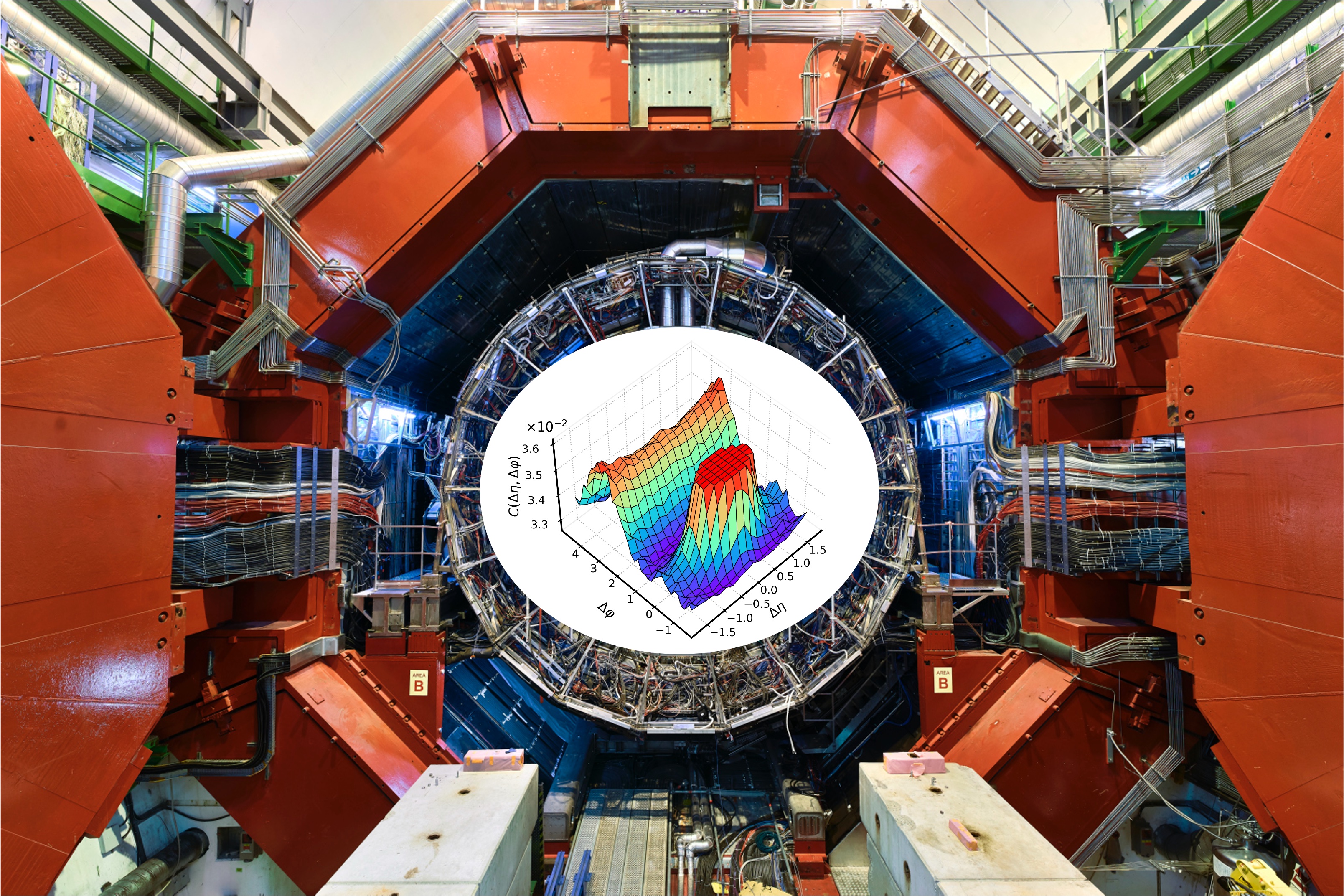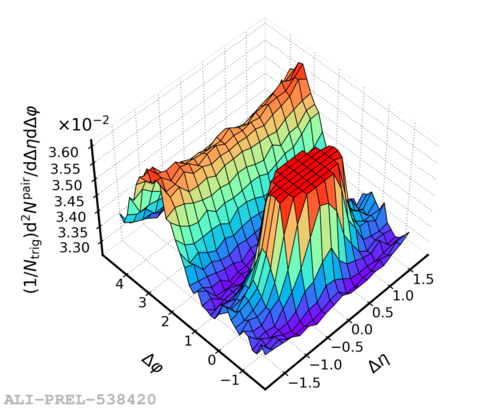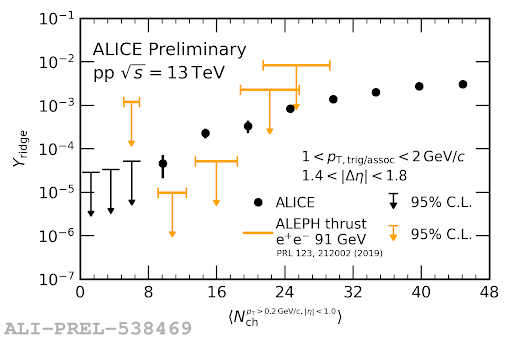
At the 57th Rencontres de Moriond international conference, the ALICE Collaboration presents new results on observing ridge in low multiplicity pp collisions at the LHC.
Article in home.cern
Recreating the intense fireball of quarks and gluons that existed immediately after the Big Bang, the quark-gluon plasma (QGP), has traditionally been thought to require high-energy collisions between heavy nuclei such as lead-on-lead. The particles produced in these collisions interact with each other, forming a fluid that shows collective motion, i.e. flow. In collisions of heavy nuclei, the observation of significant correlations of produced particles that are separated by a long distance along the beam axis (known as long-range correlations) is a consequence of these collective effects and the formation of QGP.
At the LHC, long-range correlations have also been observed in those proton-proton (pp) and proton-nucleus collisions, in which the number of produced particles is several times larger than on average. These observations were not expected as it was generally assumed that these collisions would be too small and dilute to develop fluid-like behaviour. Although further studies have shown that the observed correlations are indeed collective in nature, the mechanisms that lead to these observations are not fully understood.
In the conference, the ALICE Collaboration presents new results of long-range correlations in low-multiplicity pp collisions to explore the lower limit of the collective effects. In the data analysis, one measures correlations of pairs of particles in terms of their differences in azimuthal angle (∆φ) and pseudorapidity (∆η). A ridge structure around ∆φ ~ 0 and across ∆η (i.e., around the beam axis) is observed. The measured correlation yield as a function of multiplicity represents correlated particle production along the beam axis, indicating that the signal is indeed related to collective effects even in low-multiplicity pp collisions.

The figure shows the distribution of particle production associated with a trigger particle in relative pseudorapidity (∆η) and azimuthal angle (∆φ) for one multiplicity window in pp collisions at √s = 13 TeV. The near-side (∆φ ~ 0) ridge is seen to be quite prominent at large |∆η|. The near-side correlated yield is obtained by integrating the near-side ridge after subtraction of the baseline.

The figure shows the near-side correlated ridge yield in low multiplicity proton-proton collisions measured by the ALICE Collaboration (black), compared to measurements from ALEPH electron-positron annihilation data (orange). The horizontal bar denotes the upper 95% confidence limit and the length of the bar represents the uncertainty for the multiplicity conversion to the ALICE acceptance.
The ALICE results are compared to published results from electron-positron annihilations from ALEPH archived data. The comparison shows that the correlation strength in pp collisions is larger than that of electron-positron collisions of similar multiplicity. The measured yield represents correlated particle production at long range in rapidity which indicates that the signal is related to early-stage phenomena, such as in the shape of the initial collision region.
These new results, as well as future studies based on data from the third run of the LHC are expected to help identify the underlying dynamic mechanisms responsible for the emergence of collective effects in small collision systems.
